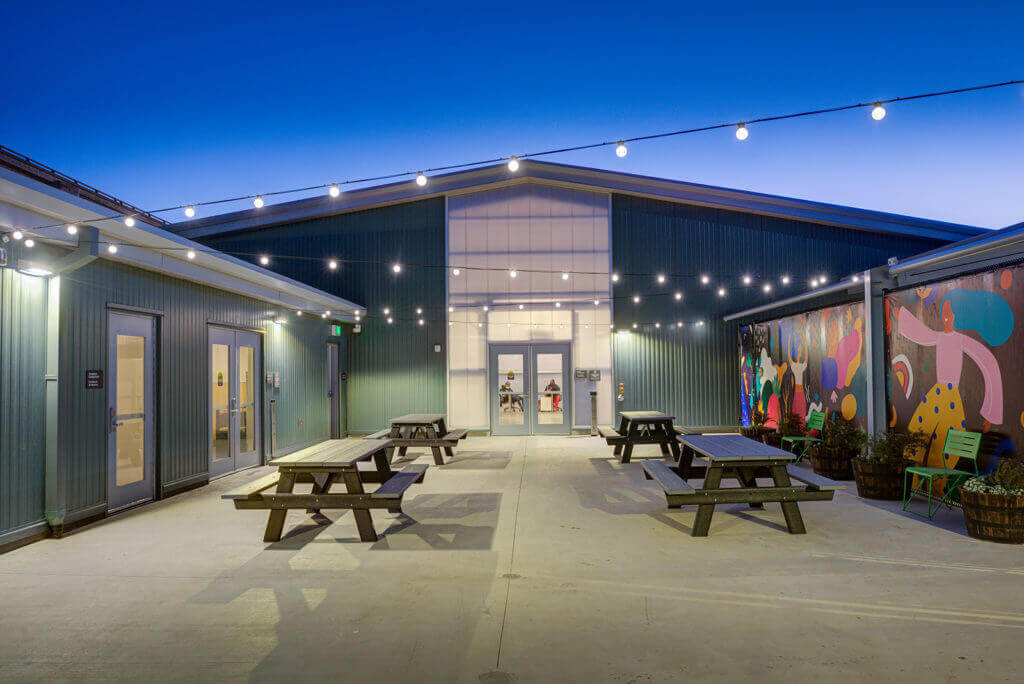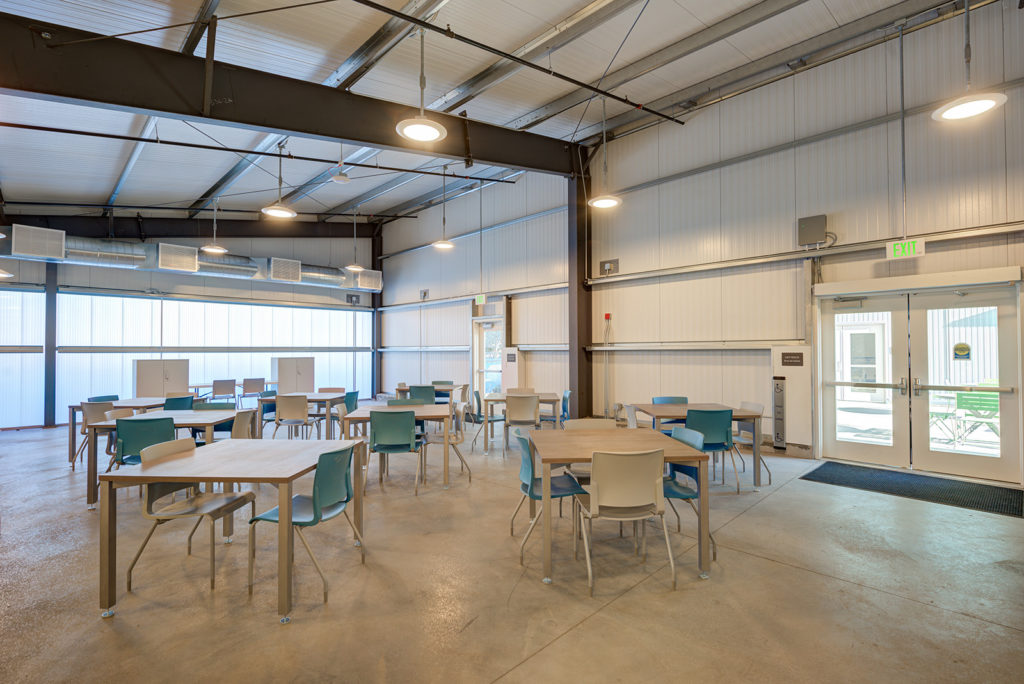San Francisco Homeless Find Shelter, Thanks to EcoSteel

San Francisco, like a number of major urban areas across the country, faces a serious and growing homeless crisis. Precisely 8,035 homeless people were counted during a 2019 “point-in-time” street and shelter count. This represented an increase of more than 14 percent from a similar count of the city’s homeless in 2017.
This situation calls for more shelters for unhoused San Franciscans. Those shelters must be constructed affordably and quickly, and must feature quality construction. For all those reasons, the natural choice for the city’s newest shelter was EcoSteel.
The Bayview Safe Navigation Center, located at 1925 Evans Ave. in the Bayview neighborhood of San Francisco, is owned by the city and county of San Francisco. A navigation center differs from a homeless shelter in that it is a short-term stay center, says Baris Lostuvalli, the Pankow Builders project executive. The name refers to helping people try to navigate life. Those entering the center can bring in their three Ps: Pets, partner and possessions. And they can stay up to three months, Lostuvalli says.

This center is operated and managed by the city’s Department of Homelessness and Supportive Housing (HSH). The department works through San Francisco Public Works to design and construct capital projects, reports Rachel Alonso, owner’s representative and project manager for the San Francisco Department of Public Works.
Officially unveiled in February, the one-story Bayview Safe Navigation Center measures almost 25,000 square feet in size. It is designed to accommodate 203 unhoused individuals at any one time. But due to current COVID-19 social distancing protocols, the shelter will initially limit occupancy to 115 people. The building of the center is one component of a larger initiative announced in 2019 by San Francisco Mayor London Breed. That plan called for the creation of 1,000 new shelter beds by end of 2020.
Prior to the shelter’s construction, the site on which it was built served as a surface parking lot within a highly industrial city neighborhood. The owner, the California Department of Transportation, also known as CalTrans, had leased it to a private company, which used the land parcel to provide prearranged private parking
Challenges aplenty

The building of the navigation center required the construction team to overcome several challenges. Not the least of those hurdles was meeting the expedited schedule and tight budget parameters imposed on such projects by the city, Alonso says.
“Site conditions were also very challenging,” she adds. “The poor quality of the soil forced us to be creative with the foundation of the site. Failing to be creative would accelerate sinking of the structure. There was also minimal electrical infrastructure in place, which meant we had to trench all the way a block up Evans Ave., and half a block down Toland St. to connect our building to a power pole.”
From the perspective of EcoSteel founder Joss Hudson, the biggest hurdle presented by the project was creating an attractive-looking building that at its core had to ultimately be utilitarian in nature. “We had a very low budget, a high demand and it had to be completed quickly,” he remembers. “The challenge was creating a low-cost, attractive building that could provide decades of use and be delivered quickly.”
“The challenge was creating a low-cost, attractive building that could provide decades of use and be delivered quickly.”
Two other obstacles appeared somewhat at odds with one another. Because it would be part of an industrial zone, it had to fit that aesthetic. However, that location placed the building within a couple hundred feet of a major highway overpass, which happened to be an overpass under which homeless people lived. That necessitated sound deadening building materials. The panelized construction, featuring insulated roof and wall panels, allowed the building to mitigate overhead traffic sounds, Hudson explains.
Benefits of steel

Especially when compared to new construction, steel construction from EcoSteel “was definitely at the right price point,” Alonso says. “And we were able to erect the building quickly. The panels and frame could be fabricated while the site work was going on and we were building the foundation, which allowed the schedule to be expedited.”
“was definitely at the right price point,” Alonso says. “And we were able to erect the building quickly.
Alonso adds the EcoSteel structure is very durable and provides a level of quality, she says, that “you don’t always see in earlier shelter construction. It doesn’t seem like it will fall apart or deteriorate. The building will take a lot of wear and tear, so it was important we built a shelter that would withstand that kind of wear and tear.”
Lostuvalli was also highly impressed with the benefits. “EcoSteel provided something really interesting, which was the pre-engineered system,” he says. “We didn’t have to reinvent the wheel; it was ready to go. Having a partner like EcoSteel allowed us to go fast. Because EcoSteel provided both the structural steel and the exterior cladding system, we were able to finalize a very big percentage of the building with one vendor. Most steel systems provide just the structure. EcoSteel provides both, a big plus.”

Another key participant, architect Mike Bullman, also liked that aspect of the work. “It was a benefit to have EcoSteel handle the structure and envelope,” says Bullman, AIA, an associate in the firm of Charles F. Bloszies in San Francisco. “It’s about making something simple and nice looking, but also conserving cost and time . . . EcoSteel handled all the details, which benefitted the schedule.”
EcoSteel handled all the details, which benefitted the schedule.”
Matching solution

Lostuvalli reports he “would absolutely recommend EcoSteel,” and is actually doing so as he begins work on a future project. “EcoSteel is a completely integrated steel-and- skin solution,” he adds. “You don’t have to get steel from one side and skin from another side, and then find they don’t match. These do match because you get them from one vendor. All those coordination problems you have in other buildings? We didn’t have that here. That’s a big gain. And the EcoSteel solution is very price competitive.
“Let me put it this way. For us, it was an optimal solution, one that optimized the cost-effectiveness, schedule and performance. That was EcoSteel.”


SF Navigation Center for EcoSteel 
SF Navigation Center for EcoSteel 
SF Navigation Center for EcoSteel 
SF Navigation Center for EcoSteel 
SF Navigation Center for EcoSteel 
SF Navigation Center for EcoSteel 
SF Navigation Center for EcoSteel 
created by dji camera